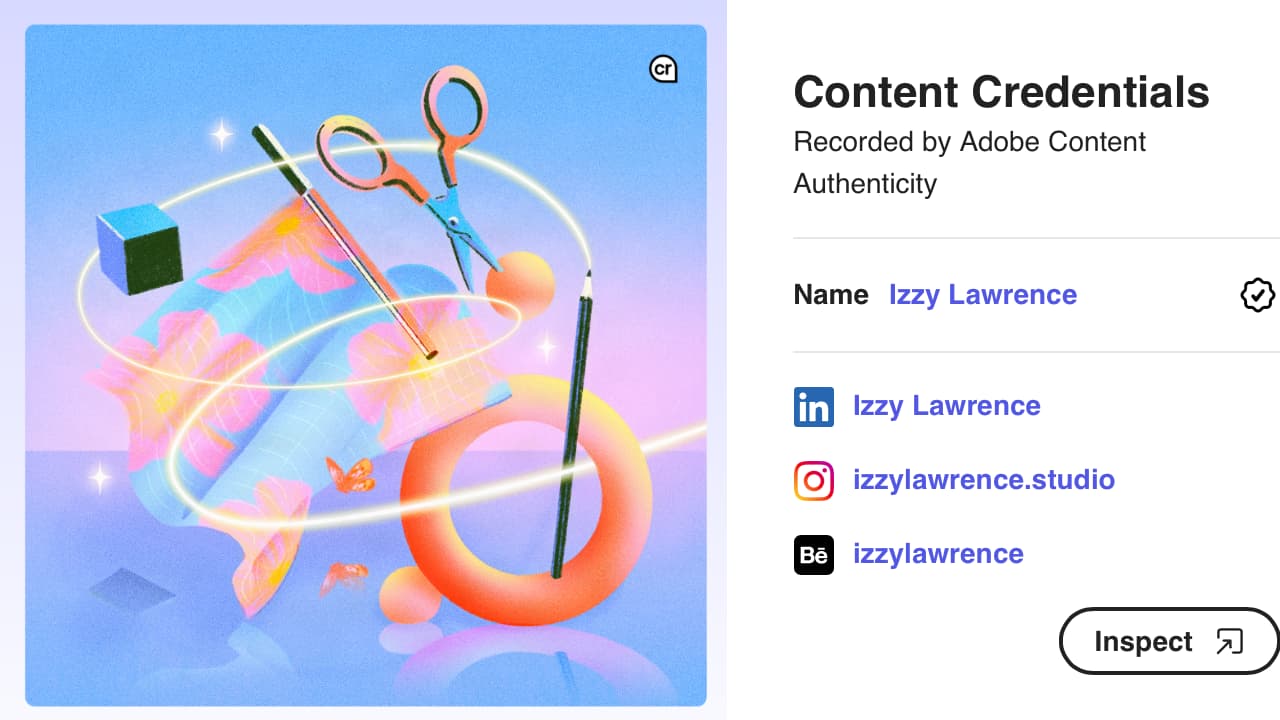
Adobe’s Content Authenticity Initiative takes an important step forward with the first public beta of an app that will allow creators to apply Content Credentials to their digital work.
We first wrote about the Adobe Content Authenticity last October and it is good to see it finally move into the public beta phase of the project.
The idea is a simple one but also a difficult to enact, namely that creators need a reliable way to verify their identities and receive credit for what they produce. As Adobe says “Without this, creators risk losing control of their work, missing future opportunities, or worse, watching others use or profit from their work without their consent.”
The app lets users attach Adobe’s Content Credentials to their work, a secure type of metadata based around the Coalition for Content Provenance and Authenticity (C2PA) Content Credentials system that allows creators to share information about themselves and their work. This info stays with it permanently, even if a screenshot is taken says Adobe, and can include their verified name (powered by Verified on LinkedIn), links to social media accounts (Behance, Instagram, LinkedIn, and X), and more.
Content Credentials can be batch added to up to 50 JPG or PNG files at once, whether the content was made with Adobe apps or not, making it a fairly simple task to process older content as well. Adobe says support for larger files and more media types, including video and audio, is coming soon.
Creators and consumers can use the Content Authenticity extension for Google Chrome and the Inspect tool within the app to help display and recover any Content Credentials associated with the content, including edit history when available. Presumably this will also be supported on other browsers in the future.
Then of course there’s AI to consider. Content Credentials can also be used to signal to other generative AI models that users don’t want their content used for training. Of course, this is a bit of a shot in the dark at the moment as global opt-out regulations are still being established and the number of companies willing to respect creator preferences (hopefully) builds. Whether via voluntarily action or legal enforcement, however, it is a growing consideration and something that the release of the app can only help move forward.
Future developments
Adobe says it plans to integrate the Content Authenticity app with Creative Cloud apps that support Content Credentials such as Photoshop, Adobe Lightroom and more, ultimately making it the centralized hub for creators managing their Content Credentials preferences across Adobe apps.
In the coming months, LinkedIn also plans to expand its support for Content Credentials by displaying the attribution information attached with the Content Authenticity app directly on its platform. This will effectively connect ‘trust signals’ across platforms, meaning if a photographer uploads a photo to the Content Authenticity app and signs it with Content Credentials, including their verified identity, LinkedIn will display the credentials via a 'Cr' pin when they share it. This allows audiences to scroll over and view the credentials with the creator’s verified name, effectively affirming attribution.
Being LinkedIn that means this is aimed at a very specific, arguably even niche, audience. But it does perhaps show how the system might work with other platforms in the future.
It's not setting the gold standard for this sort of system yet, that comes when the Content Credentials information is baked in to photographs and videos at the time of capture. But as we wait for more kit to support that functionality, it's definitely a step in the right direction.
tl;dr
- Adobe's Content Authenticity Initiative has launched a public beta app that allows creators to attach Content Credentials to their digital work, helping verify their identities and control their content.
- The app utilizes secure metadata based on the C2PA system, enabling permanent attachment of creator information, including verified names and social media links, even if the content is altered or screenshotted.
- Creators can batch add Content Credentials to multiple files and can expect future support for various media types and larger files, while tools for displaying and recovering credentials are available through Chrome and the app itself.
- Adobe plans to integrate the app with Creative Cloud and establish connections with platforms like LinkedIn, enhancing attribution visibility and potentially setting a standard for digital content authenticity.
Tags: Post & VFX Adobe


Comments